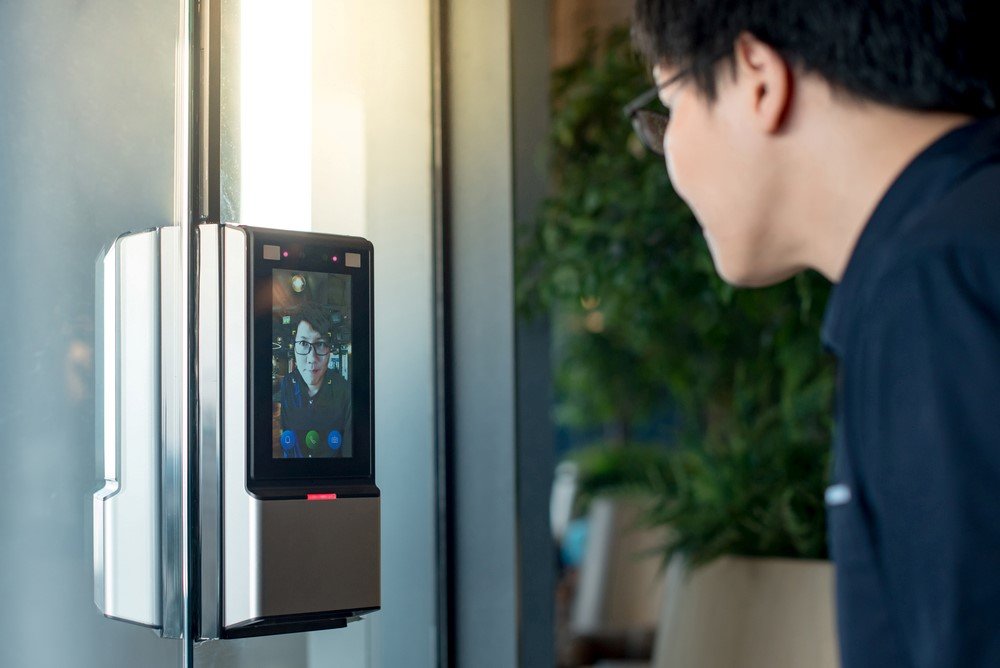We’re Starting to See Smart Homes… What About Smart Offices?
Smart homes are becoming much more prevalent as we enter the 2020s. Not everyone has a fully automated home yet, but many people at least have an Echo or a smart TV—and the numbers are on the way up. Yet focusing on smart homes exclusively risks obscuring another important phenomenon: the increasing presence of IoT and virtual workspace technologies in our professional lives.
That’s right: The smart office is becoming a reality. From the biggest corporate buildings to the coziest home offices, smart office technology will likely arrive at most office workers’ jobs before they know it—if it’s not there already. Grab your smart coffee mug and your smart stress ball because, today, we’re off to work in the smart office of the future.
The State of the Smart Office in 2021
When you think of a smart office, you might picture a high-profile tech company like Amazon. You might picture things like robot janitors, automated snack bars and meditation gardens equipped with Wi-Fi routers in outdoor electrical junction boxes so you can fire off some exquisitely mindful emails.
But, of course, the truth is that the smartest office technology is less flashy. Instead, it’s a series of technological tools that will transform life on the job in a myriad of smaller ways. We’ve already seen some of these tools make their debut in some offices, while others are on a trajectory to what should be widespread use soon.
Then, there’s the elephant in the room: the increasing prevalence of fully and partially remote work. In this space, the smart home and the smart office come together, and many people aren’t yet quite sure what the fit will look like. We’ll look at this trend more toward the end of the article.

Key Technologies of the Smart Office
So, what are these tech innovations that are powering smart offices? In the next sections, we’ll talk about some of the most important tools in the smart office arsenal.
Collaboration Tools
For many businesses, office collaboration tools have become a cornerstone element of the daily workflow. From messaging apps like Slack to project management tools like Asana and Trello, cloud productivity software is changing the way we work. These software suites make it possible to collaborate with team members around the world, a capability that’s becoming more essential every day in our world of remote work.
Video Conferencing
Video conferencing apps like Google Hangouts and Zoom are another technology that exploded during the pandemic and now seem here to stay. Teams and clients from around the world can now collaborate over video chat, and the ever-improving quality of the tools means that international or even intercontinental workflows can feel surprisingly natural in today’s smart offices. Managers should remember, though, whether they’re virtual or in-person, that some meetings should still be emails.
Office Supply Management
Smart office tech can also improve the way businesses manage their physical environments and resources. Case in point: smart office supply management. Rather than relying on employees to keep track of office essentials like pens and printer paper, offices can use smart office supply trackers to automatically reorder supplies when they run out. Printers have even hit the market that can order their own ink!

Conference Rooms
Conference rooms are getting smarter in multiple ways. For one thing, businesses often equip their conference rooms with features like smartboards that can spark new forms of collaboration. Booking and managing conference rooms is another common task for smart office technology. No one wants to find out 20 minutes before an onboarding meeting with a big client that the conference room is actually double-booked, and smart office booking apps can help take care of those little scheduling problems.
Smart Utilities
Offices, especially large ones, often require huge amounts of electricity and natural gas for their HVAC systems and office equipment. To conserve energy, some offices have started implementing smart utility technologies similar to those commonly found in homes. These include smart thermostats, smart water meters, smart lighting, and more. Many of the offices now have installed wireless charging furniture that will help the employees to be more productive.
Keyless Entry
Controlling access to your office is more important than ever today, and in some workplaces, smart keyless entry technologies are replacing old access control systems, such as badges and keys. Keyless entry and/or smart lock systems sometimes use codes and sometimes use devices like key fob cases equipped with RFID chips. In some high-security workplaces, you’ll even find biometric-based entry systems that read an employee’s fingerprints or facial shape.
Movement Sensors
Today’s data-driven companies often want to be able to conduct empirical analysis of things like foot traffic and space efficiency when they design office floor plans. To accomplish that, they need more data, which is where movement sensors come in. These smart sensors can be used to create resources like heat maps to measure the places where people are congregating and/or getting bogged down. This is particularly critical for open office floor plans, which are popular but require careful design.
What’s Next for Smart Offices?
What does the horizon look like for smart offices? Here are some trends we should all be watching:
- Rising threats of cybercrime, such as data breaches and ransomware attacks, will force businesses to adopt improved security for their data networks. Taking the proper network security precautions with their IoT devices will increasingly become the standard for most businesses, but some will learn the hard way.
- The intersection of the smart office and the home office will produce a new wave of smart home office technologies, such as improved home office functionality for voice assistant speakers. Technologies that create a better home environment, such as smart air purifiers, will also keep gaining popularity in the home office market.
- More offices will come with smart office infrastructure built-in. High-speed data connections (including 5G) are a must, while some newer office buildings may even include built-in smart office capabilities.
- Smart offices will continue to be a high-growth area for B2B tech companies. Enterprise software designers will increasingly build their product offerings with smart offices in mind, including IoT integration options.
Read Also: Eight Upgrades You Need for Your Commercial Office


Pingback: Living With The Latest Technology In Your Home - Digital Global Times
Pingback: How The Office Has Evolved From The Past - Digital Global Times
Pingback: 5 Different Ways You Can Move Homes - Digital Global Times
Pingback: Factors To Keep In Mind While Choosing An Internet Service For Your Smart Home - Digital Global Times